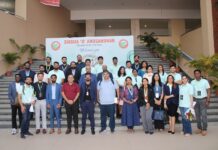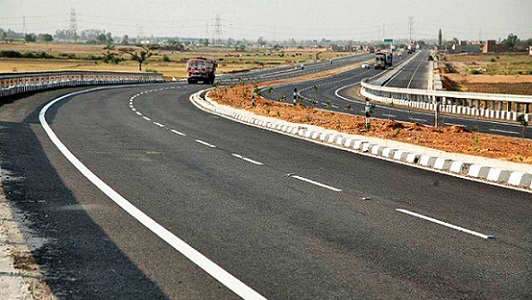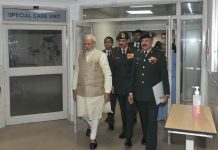By Our Correspondent
BHUBANESWAR: The 64th Network Planning Group (NPG) meeting was convened on January 23 2024, under the chairpersonship of Ms. Sumita Dawra, Special Secretary, Logistics at Indian Railways Institute of Financial Management (IRIFM), Secunderabad.
The meeting witnessed active participation from key Infrastructure Ministries and Departments including Ministry of Road, Transport & Highways (MoRTH), Ministry of Civil Aviation (MoCA), Ministry of Railways (MoR), Ministry of Ports, Shipping and Waterways (MoPSW), Department of Telecommunications (DoT), Ministry of Power (MoP), Ministry of Defence (MoD), NITI Aayog and representatives from South Central Railway (SCR).
During the meeting, the Network Planning Group (NPG) discussed three proposed Greenfield projects of Ministry of Railways (1) and Ministry of Road Transport and Highways (2), with an aggregate project cost worth about INR 9600 Cr.
The proposed construction of a New Region Ring Road (RRR) in Odisha was also evaluated by NPG Members. This project of MoRTH aims to smoothen the movement of freight between Chennai and Kolkata. It aims to provide multimodal connectivity to economic nodes such as economic corridors, industrial parks, mineral and mining zones, good sheds, etc. as well as logistics and social nodes. It bypasses major towns in Odisha, avoiding traffic congestion in the cities and enhance logistics efficiency by reducing travel time by 37.5%.
The proposed project of MoR includes a broad-gauge line between Telangana and Andhra Pradesh states to integrate new commercial and tourist areas. This project aims to enhance multimodal connectivity, increase capacity for both freight and passenger trains, and provide faster rail connectivity between Telangana and Andhra Pradesh. In addition, the project will increase employment, and tourism, and will reduce traffic congestion at major junctions. Area Development Approach has been integrated into project planning for enhancing last-mile connectivity, duly taking into account synergies with ports of Andhra Pradesh.
Another significant project discussed in the meeting was proposed four-laning of NH-727 in Uttar Pradesh. Upon completion, the project will provide improved connectivity to Buddhist Circuit Route, 2 Social , 3 industrial parks and 4 Economic nodes such as fishing seafood, and textile clusters, and eleven logistics nodes including Amrit Bharat Railway Stations and Airports. This is expected to increase cross-border trade, stimulate socio-economic development, and improve road connectivity to economic centers, industrial zones, and agricultural regions, industrial parks, etc. thereby boosting economic activities, trade, and investments. The project’s success is anticipated to also spur the growth of ancillary infrastructure, including warehouses, distribution centers, and logistics hubs, and create opportunities for new services such as roadside amenities, gas stations, and rest areas to cater to increased traffic and travel demand.
Further, the significance of rail infrastructure in sustaining Indian economy’s growth to INR 5 Trillion and meeting logistics market growth of 8464 million metric tonnes by 2031 was also emphasized. To meet the logistics need for cargo movement as a result of growth in the Indian economy, Indian Railways has proposed to increase rail modal share to 35% by 2031. This will reduce India’s logistics costs and oil imports. Additionally, three economic corridors including (i) Energy, Mineral, and Cement Corridors, (ii) High Traffic Density Routes, and (iii) Rail Sagar Corridors (Port Connectivity Program) have also been planned by MoR. These projects will have a positive impact on employment, contribute to sustainable development goals, and have a multiplier effect on the economy’s output.
In her closing remarks, Special Secretary emphasized that these projects integrate various modes of transport, offer substantial socio-economic benefits, and will contribute to the overall development of the regions. She added that Ministries should incorporate the Area Development Planning Approach in Infrastructure project planning and enhance coordination with local authorities, including State Governments to identify infrastructural gaps and promote integrated planning for Area Development.



























